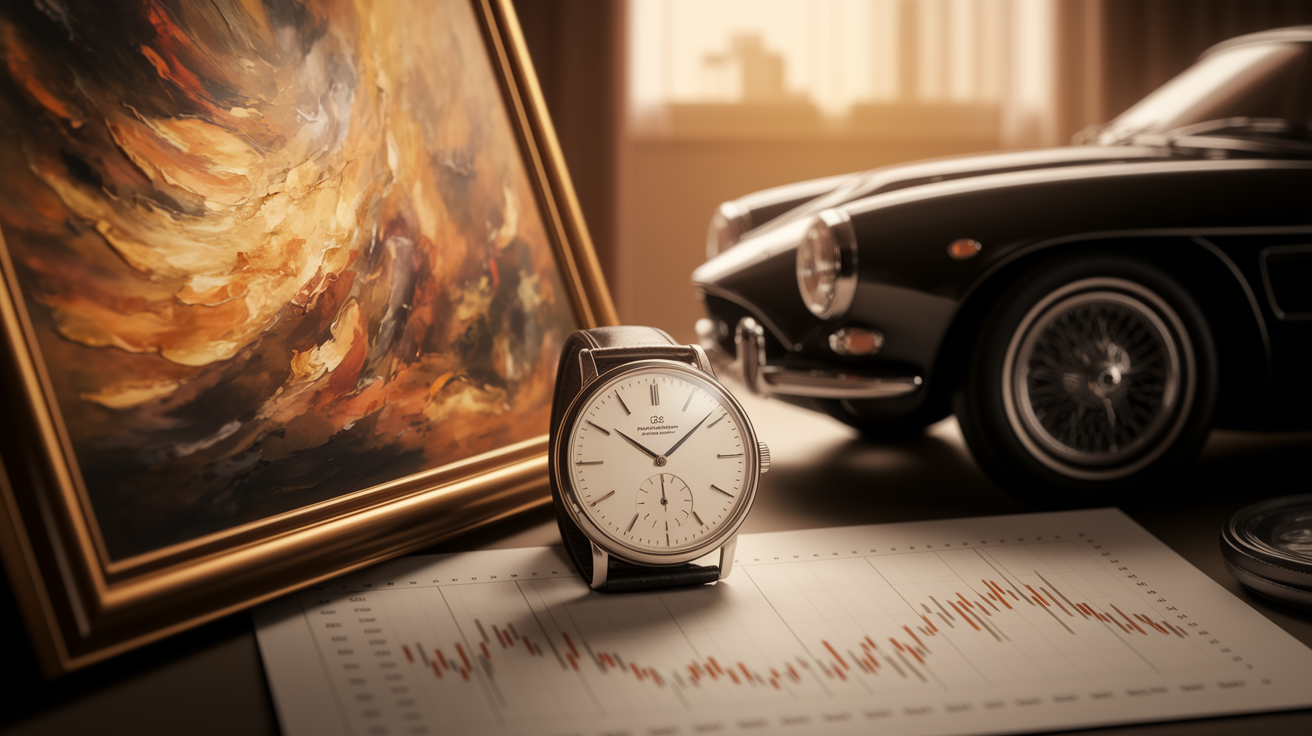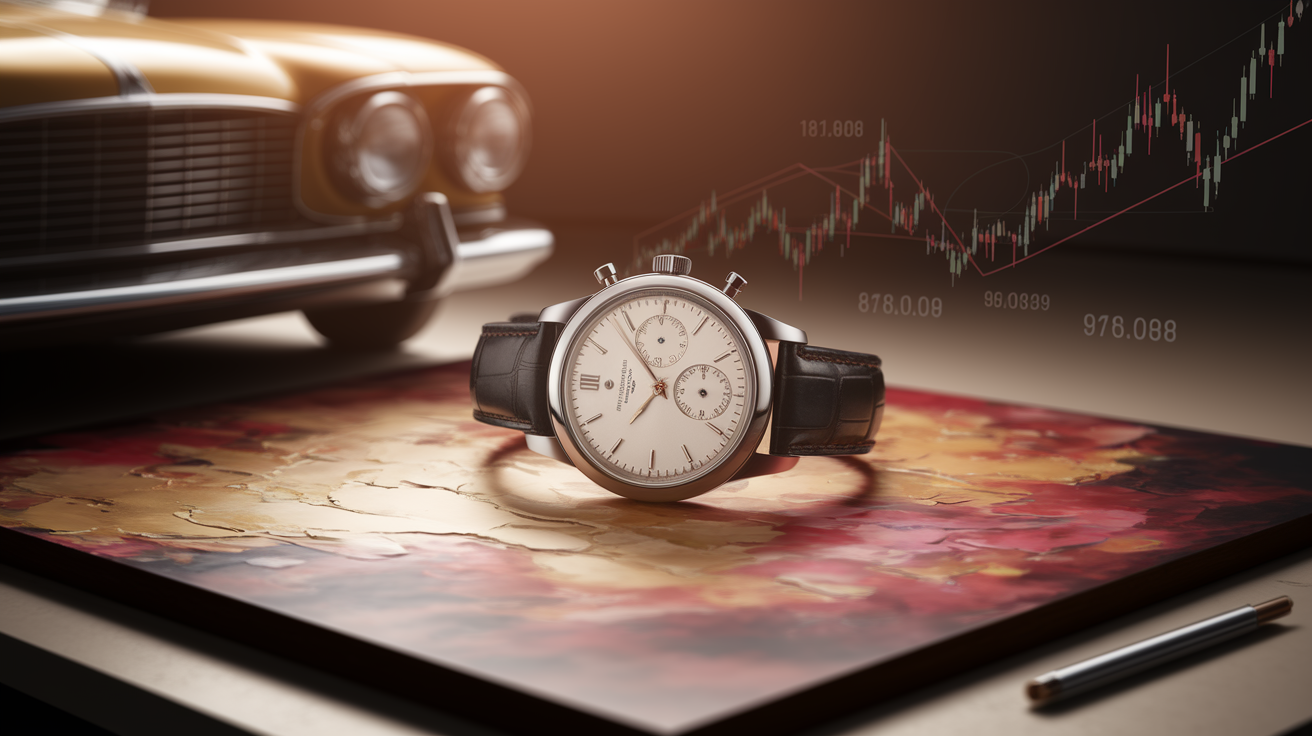In the colorful world of investments, collectibles and stocks emerge as two fascinating options under the spotlight. While collectibles like watches, artworks, and vintage cars often shine with an emotional note, stocks potentially promise high returns. But how do these asset classes perform in a direct comparison? In two chapters, we examine the pros and cons of both options and their potential for value appreciation, to offer you a comprehensive view.
Symphony of Values: A Comparison of Collectibles and Stocks

Collectibles and stocks represent two of the most polarized asset classes that investors can choose to diversify their portfolios. They have few affinities and offer different advantages and disadvantages, making them unique in their investment strategy. The emotional value of collectibles often attracts a class of investors seeking not only financial returns but also a deeper personal connection. Rare watches or artworks are more than just objects. They are pieces of cultural heritage and mirrors of our history. A patient collector can benefit from long-term value appreciation, especially when the rarity and historical significance of an item are confirmed. However, as appealing as these advantages are, they depend on speculative valuations and often illiquid markets, making quick sales complicated.
In contrast, stocks offer awareness and security in a more liquid environment. Their high liquidity allows investors to respond promptly to market changes. Thanks to the ability to invest in a wide range of companies through funds, investors can intelligently spread risk. The prospect of high returns is enticing, but it also carries the risk of volatility – caused by the unpredictable nature of global markets. Furthermore, the success of a stock portfolio requires a solid understanding of company performance and market mechanics.
Weighing between collectibles and stocks requires careful analysis of one’s investment objectives and risk tolerance. The uniqueness and emotional value of collectibles stand in contrast to the calculable, albeit volatile, opportunities of the stock markets. A strategy that considers both asset classes could help offset their respective weaknesses and create a robust portfolio. Perhaps it is precisely this mix that allows the investor to invest not only in material values but also in cultural and emotional values.
Emotion Meets Return: A Comparison of Collectibles and Stocks

The comparison between collectibles and stocks regarding their potential for value appreciation reveals impressive possibilities for investors seeking a balance between emotion and return. Collectibles, ranging from vintage cars to handbags and comics, not only offer financial prospects but also emotional satisfaction, which traditional forms of investment often cannot provide.
Collectibles: A Treasure Full of Emotions and Return Potential
Collectibles stand out for their ability to establish a personal connection with the owner. Vintage cars, often from a bygone era and capable of evoking nostalgic memories, are classic examples of investments with added value. The growing enthusiasm for classics like the Chevrolet Camaro or the Ford Mustang has led to a continuous rise in prices, making them an attractive investment option.
Another fascinating example is luxury handbags from brands like Hermès or Chanel. Particularly limited editions or bags made from exotic materials have proven to be solid forms of investment. Their rarity combined with consistent demand often leads these items to increase in value, even in uncertain economic times. Moreover, rare comics, especially first editions like Amazing Fantasy #15, offer the potential for enormous returns, as they combine both high demand and desirability.
Stocks: Flexibility, Liquidity, and Market Potential
Stocks, on the other hand, offer a flexibility that collectibles cannot match. The ability to respond quickly to market changes and the liquid nature of stocks, which can be sold at any time, are essential advantages for investors who value agility and rapid realizability. Additionally, stocks provide the opportunity for passive income through dividends and, in their scalability, are almost unparalleled.
Rare Treasures vs. Market Dynamics
The collectibles market can be volatile and subject to trends and fads. In contrast, stocks adapt to economic changes and offer opportunities to directly benefit from company developments. This is also reflected in the different risk profiles that both collectibles and stocks present to the investor.
A balanced approach that combines collectibles with their emotional and cultural value to the economic dynamics of stocks could help investors draw the best from both worlds. A thoughtfully mixed approach to these asset classes not only minimizes risks but also maximizes potential returns.